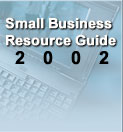 |
| |
| |
| |
| |
| |
| |
| |
| |
| |
| |
| |
| |
| |
| |
| |
|
Changing Your Business or Getting Out of BusinessDeclaring BankruptcyBankruptcy proceedings begin with the filing of a petition with the bankruptcy court. The filing of the petition creates a bankruptcy estate, which generally consists of all the assets of the person filing the bankruptcy petition. A separate taxable entity is created if the bankruptcy petition is filed by an individual under chapter 7 or chapter 11 of the Bankruptcy Code. Important! Filing bankruptcy may harm your personal credit rating and impact on your ability to borrow money in the future. Employment Taxes are rarely, if ever, discharged (eliminated). The tax obligations of the person filing a bankruptcy petition (the debtor) vary depending on the bankruptcy chapter under which the petition was filed. You should seek competent professional advice. If you are involved in an ongoing bankruptcy proceeding, contact your local IRS office (1-800-829-1040). While the bankruptcy proceeding may not eliminate your tax debt, it will temporarily stop IRS enforcement action to collect a debt related to the bankruptcy. Partnerships
and Corporations Important References Publication
908 Bankruptcy Tax Guide |